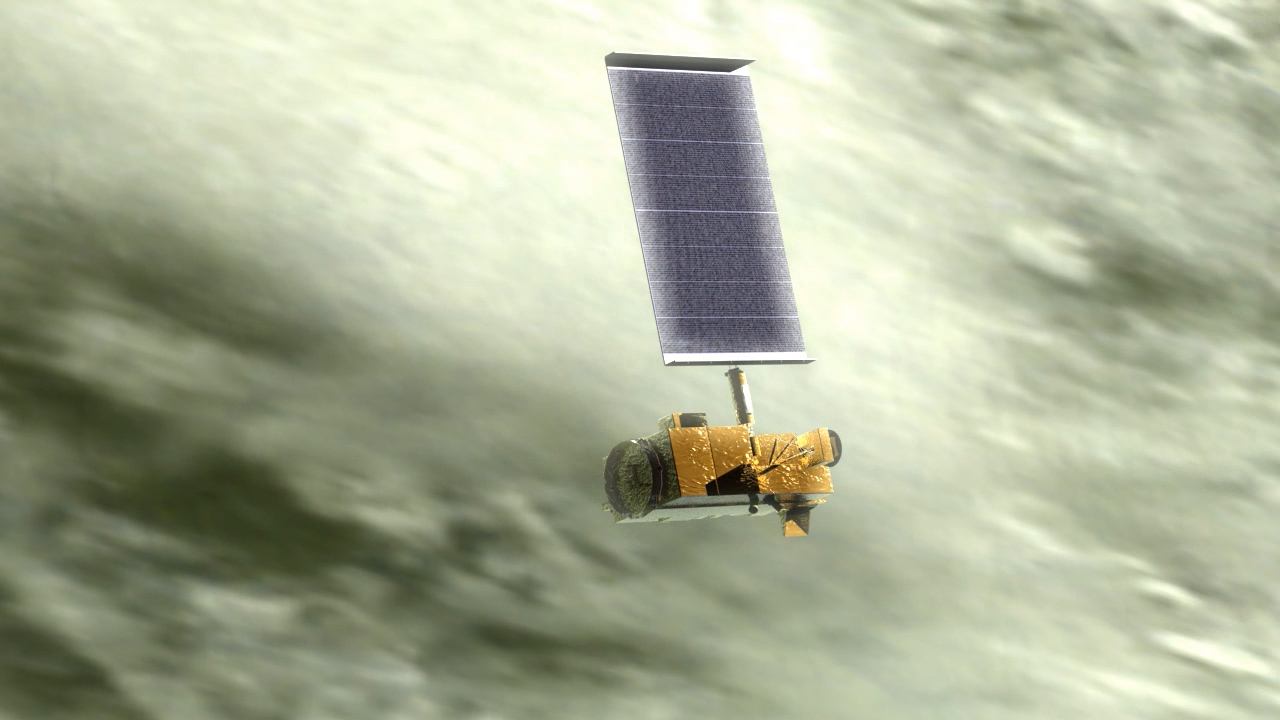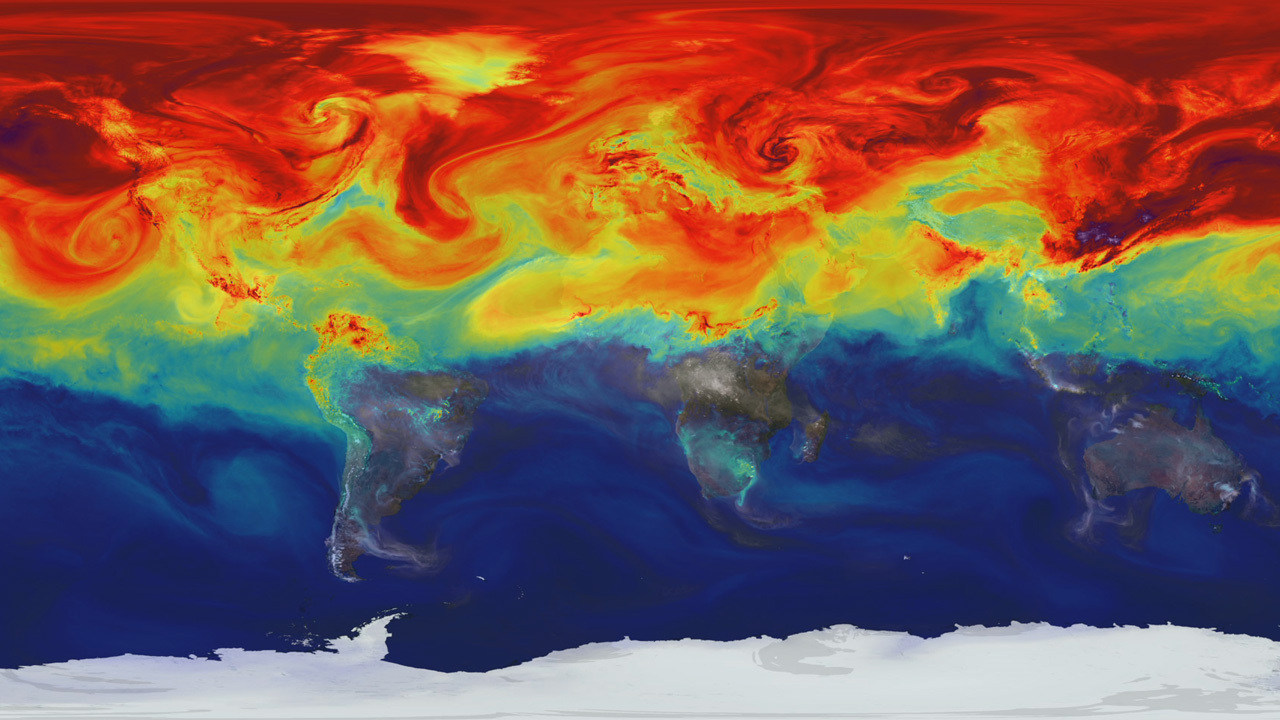New NASA chief scientist pledges a plan to renew agency's Earth satellite fleet
Some of the agency's Earth-observing satellites have been in space for decades.

NASA's newly appointed science and Earth science lead says there is "more to plan" when it comes to figuring out next priorities for the agency's aging satellite fleet.
Katherine Calvin is the first NASA chief scientist to also act as the agency's senior climate advisor, a role created in February 2021. Calvin is serving in the roles under a temporary assignment from her long-time base at the Pacific Northwest National Laboratory's Joint Global Change Research Institute. Calvin comes to the agency as NASA works to implement a new Earth System Observatory, first announced in May 2021. The program intends to send a set of Earth-focused missions to space to document climate change and facilitate responding to the crisis.
But Calvin will also face the perennial infrastructure problem of keeping the Earth observation fleet current. While NASA plans to launch four new Earth missions this year, the agency and its partners are also working to get the most out of existing satellites. Many of these spacecraft are at the fringes of a typical 15- to 20-year lifetime, including Terra (launched in 1999), Aqua (2002) and Aura (2004), although some of the capabilities of these missions are replicated in newer satellites.
Related: 10 signs that Earth's climate is off the rails
In a telephone news conference with reporters held Tuesday (Jan. 11), Calvin said the Earth System Observatory will be a first step to figuring out what capabilities might be aging out or completely missing, due to the system's stated focus on a "3D holistic view of the Earth."
The first mission in the program will be the NASA-ISRO Synthetic Aperture Radar (NISAR), an Earth-observing collaboration in the works for almost a decade with the India Space Research Organisation (ISRO). Due to the pandemic, it will launch about seven months later than previously planned, in January 2023 instead of June 2022.
"NISAR can help measure changes in the Earth's surface, which will help us understand things like ice sheet collapse, and landslides," Calvin told reporters. "There's a lot more planned," she added, "and I'm looking forward to learning that as I settle in at NASA."
Get the Space.com Newsletter
Breaking space news, the latest updates on rocket launches, skywatching events and more!
Calvin's work will reach beyond NASA; the senior climate advisor position was created to communicate with agencies across the federal government as part of President Joe Biden's prioritization of climate change.

NASA administrator Bill Nelson, who was also on the call with reporters, pointed to the rise of analytic data as being key to address the impacts of climate change.
As an example, he pointed to what he terms a "Mission Control center for climate change," referring to a forthcoming "climate resilience design center" that the agency announced in October that will be focused on helping state, local and tribal governments with their adaptation strategies.
"Many would have the opportunity to have the data almost real time," Nelson said, using the recently launched Landsat 9 mission as an example of the data products he is envisioning for NASA's future satellite fleet.
"Think about the farmer in Iowa that has a corn field, and wants to measure whether or not there's disease in his crops. He can get that data today, or [data about] the moisture content of the soil," Nelson added.

While Earth science is an urgent front to which Calvin will devote much of her time, given the rise in 2021 of flooding and wildfires across the planet, other sectors of NASA science will also get her attention, she said.
"Like many people, I woke up early on Christmas morning [Dec. 25] to watch the launch of the James Webb Space Telescope, and it will start sending us images this summer," she said, speaking of a mission with a vast mandate that is expected to include investigations into the origins of the universe and into the structure of the cosmos.
Other investigations she cited are the asteroid-smacking Double Asteroid Redirection Test (DART) expected to hit a small space rock named Dimorphos this fall, along with the closed-loop systems on the International Space Station that "help recycle and reclaim water, and we can think about how to make that useful back on Earth."
NASA's next major climate announcement will occur on Thursday (Jan. 13), when climate researchers from the agency and the National Oceanic and Atmospheric Administration (NOAA) will release their annual assessments of global temperatures and discuss climate trends of 2021.
Follow Elizabeth Howell on Twitter @howellspace. Follow us on Twitter @Spacedotcom and on Facebook.
Join our Space Forums to keep talking space on the latest missions, night sky and more! And if you have a news tip, correction or comment, let us know at: community@space.com.

Elizabeth Howell (she/her), Ph.D., was a staff writer in the spaceflight channel between 2022 and 2024 specializing in Canadian space news. She was contributing writer for Space.com for 10 years from 2012 to 2024. Elizabeth's reporting includes multiple exclusives with the White House, leading world coverage about a lost-and-found space tomato on the International Space Station, witnessing five human spaceflight launches on two continents, flying parabolic, working inside a spacesuit, and participating in a simulated Mars mission. Her latest book, "Why Am I Taller?" (ECW Press, 2022) is co-written with astronaut Dave Williams.
